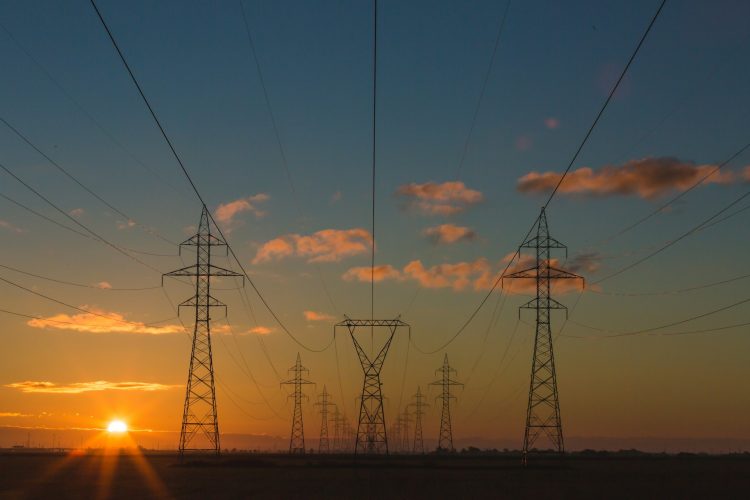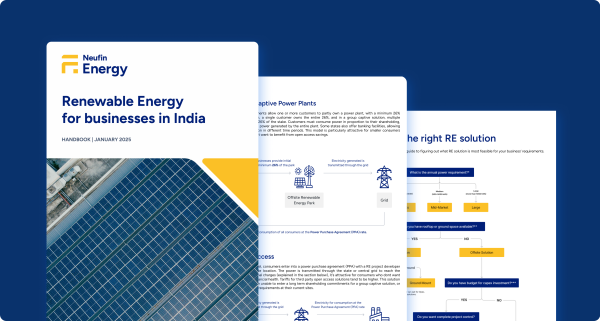For many businesses, the monthly electricity bill is often viewed as just another operational expense. However, hidden within those rows of numbers and technical terms lies valuable information that could be the key to significant cost savings and a successful renewable energy transition. As experts in helping businesses optimise their energy consumption, we’ll break down the essential components of your electricity bill and explain why understanding them is crucial for your business’s bottom line.
Table of Contents
Key components of your electricity bill
- Contract Demand (CD): This is perhaps one of the most critical elements of your electricity bill. Contract Demand represents the maximum electrical power that your electricity supplier has agreed to provide your facility. Think of it as a reservation of power capacity specifically for your business. If you consistently use less than your CD, you’re paying for unused capacity. Conversely, if you exceed it, you’ll face penalty charges. Regular monitoring of your CD utilisation can help optimise this cost component.
- Connection Voltage: The voltage level at which power is supplied to your premises is another crucial factor. Different voltage levels (like HT or LT) come with different tariff structures and technical requirements. Higher voltage connections typically offer better rates but require more sophisticated infrastructure. Understanding your connection voltage helps in planning energy optimisation strategies and potential renewable energy integration.
- Tariff Category: Your business falls under a specific tariff category based on your consumption patterns and type of connection. This classification directly impacts your electricity rates and applicable charges. Commercial and industrial consumers often have different tariff structures compared to residential users, including time-of-day tariffs that can be leveraged for cost optimisation.
Understanding time-of-day consumption
Modern electricity bills break down consumption into different time slots, each with its own tariff rate:
- Morning Peak (3 hrs: 9 AM – 12 noon): During these hours, industrial activity is typically high, resulting in higher power rates. This is when many businesses start their daily operations, leading to increased grid demand.
- Evening Peak (4 hrs: 6 PM – 10 PM): Another high-tariff period when both industrial and residential demand peaks. Smart businesses often plan their high-consumption activities outside these hours.
- Off-peak (9 hrs: 6 AM – 9 AM and 12 noon – 6 PM): These periods usually have lower tariff rates, making them ideal for energy-intensive operations.
- Night Off-peak (8 hrs: 10 PM – 6 AM): Often the lowest tariff period, perfect for businesses that can operate during night hours. This is an excellent opportunity for load shifting to reduce energy costs.
Understanding additional charges
- TOD Zone Charges: Time of Day (TOD) zoning divides the 24-hour period into different time slots, each with its own multiplying factor for energy charges. This system encourages load shifting to off-peak hours. Peak zones typically have higher multiplying factors (greater than 1), while off-peak zones often have lower multiplying factors (less than 1). Normal periods usually maintain a neutral factor (equal to 1). By understanding these factors, businesses can strategically plan their operations to minimise costs.
- Wheeling Charges: These charges cover the cost of transmitting electricity from the generation point to your facility through the power grid. This includes transmission losses, infrastructure maintenance costs, and grid operation expenses. Understanding wheeling charges becomes particularly crucial when evaluating options like open access power purchase, as they significantly impact the final cost of power procurement.
- FAC (Fuel Adjustment Charges): This is a variable component that reflects changes in fuel costs used for power generation. It can fluctuate monthly based on global fuel prices, domestic fuel availability, and changes in the generation mix. Being aware of FAC trends helps in budgeting and potentially exploring alternative power sources when these charges trend upward.
- Energy Charges: The basic rate you pay per unit of electricity consumed varies significantly based on several factors. Your tariff category, time of consumption, voltage level, and seasonal factors all play a role in determining these charges. Understanding these variations helps in making informed decisions about operational timing and potential upgrades to your power infrastructure.
- Bulk Consumption Rebate: Many DISCOMs offer rebates for high-volume consumers. These rebates can substantially reduce your overall power costs, but they require careful attention to consumption thresholds and qualifying conditions. Understanding these parameters helps in planning your power consumption to maximise available rebates while maintaining operational efficiency.
- Power Factor Charges: These charges reflect how efficiently your facility uses electricity. A poor power factor leads to penalties that can significantly increase your bill, while maintaining a good power factor can result in rebates. Regular monitoring and maintenance of power factor correction equipment is essential for optimising these charges. The impact of power factor charges can be substantial, making it a crucial area for ongoing attention in energy cost management.
Consumption metrics and charges
- Current Total Consumption: This represents your facility’s total electricity usage during the billing period. Tracking this number month-over-month helps identify consumption patterns and anomalies. A sudden spike might indicate equipment inefficiency or process changes that need attention.
- Maximum/Billing Demand: This is the highest power drawn during the billing period and is used to calculate demand charges. It’s crucial to maintain this below your Contract Demand to avoid penalties. Regular monitoring of this parameter can help in load management and cost optimisation.
Understanding your electricity bill in detail is the first step toward energy optimisation and cost reduction. At Neufin, we help businesses navigate these complexities and develop comprehensive strategies for energy transition. Whether you’re looking to reduce costs, meet sustainability goals, or transition to renewable energy, we’re here to help you make informed decisions based on your unique consumption patterns and requirements.
Ready to optimise your energy costs? Connect with our experts to explore how we can help transform your energy expenses into strategic investments for a sustainable future.



